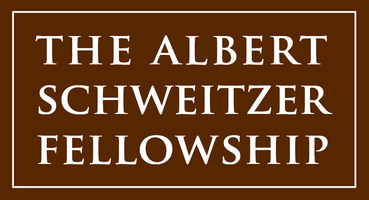By Jasmine E. Crenshaw
Incorporating His Project into His Daily Work
A Master of Public Health (MPH) student at the UAB School of Public Health, Greer McCollum deals with the severity of homelessness on a daily basis as a case manager for One Roof, a Birmingham-area nonprofit that establishes and distributes resources to individuals experiencing homelessness. Some of his clients over the past three years have been youth and young adults (YYA) who have experienced or are currently experiencing homelessness. He explained that these types of clients have a harder time receiving a variety of resources needed for them to thrive, as most homelessness resources are catered towards older populations. Greer admits that “one of the issues we have locally in regard to addressing youth homelessness is how difficult it is to work across systems to identify struggling YYA and quickly provide the support they need.” Normally, without the support and resources, the youth and young adults return to their original situations. So, for his Fellowship project, Greer aimed to build additional resources and systems for homeless youth and young adults, but first he needed to identify what supports they lacked through the creation of a needs assessment. This aim was valuable for One Roof, now as his community site partner, since their mission is “to equip and empower our community to prevent and end homelessness through advocacy, education, and coordination of services”. Greer emphasized how supported he felt by the organization, a sentiment that was echoed by his site mentor. “We are so very thankful to have Greer working on this project,” said Gordon Sullivan, Director of Operations. “Without his fellowship placement here, we wouldn’t have the staff capacity to give this project the time, attention, and dedication it deserves.”
Building Resources for Birmingham-area Homeless Youth
Greer’s project consists of three initiatives aimed at filling the service gaps for youth and young adults experiencing homelessness. The first initiative consists of the development and implementation of a “Youth Homelessness Need Assessment for the Greater Birmingham Area”, where information can be gathered about the unique needs of homeless youth and young adults to use in program planning and grant funding. The second initiative consists of establishing a “Youth Homelessness Working Group” among a variety of organizations and service providers that could help serve youth and young adult clients more seamlessly. The final initiative is to expand the existing “Youth Action Council” where service providers can directly hear from youth experiencing homelessness about their needs and suggestions. The suggestions made by the Council members would help inform how One Roof and other service agencies create future programs for this population.

Greer’s project is crafted from his collective experiences of working at One Roof and his graduate studies at the UAB School of Public Health. He credits his knowledge about creating and implementing a needs assessment to his graduate program. Community needs assessments are commonly used in public health to identify common needs of communities, develop programs that fulfill those needs, and then implement those programs. Additionally, community needs assessments can include community members from the assessment population as stakeholders, as Greer has included homeless youth into his Youth Action Council initiative. He insisted the necessity of creating a YYA-specific needs assessment as “integral to developing a system that truly serves everybody who comes in contact with it”. He also utilized another public health concept, the Social-Ecological Model, into his project planning. The model focuses on different levels of factors, from individual to societal, all which Greer examined in his project planning.
Triumphs, Challenges, and Lessons Learned
Greer dealt with his share of challenges that arose due to the coronavirus pandemic. The project period for the needs assessment was increased by two months, which also lengthened the time for other aspects of his project. He also has found coordinating between agencies and systems challenging. In spite of these challenges, the Youth Homelessness Needs Assessment will be completed very soon and will be the first of its kind done in Birmingham. Ultimately, Greer described how having to monitor and lead on this project has benefitted him professionally, stating that he looks forward to continuing his project long after his Fellowship year ends.
“We are so very thankful to have Greer working on this project. Without his fellowship placement here, we wouldn’t have the staff capacity to give this project the time, attention, and dedication it deserves.”
Gordon Sullivan, Director of Operations, One Roof



